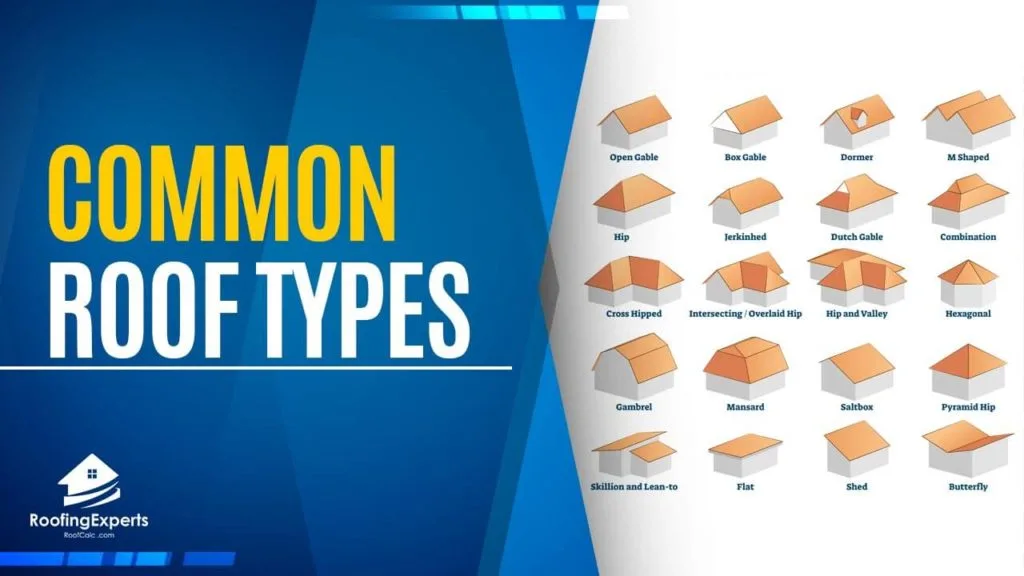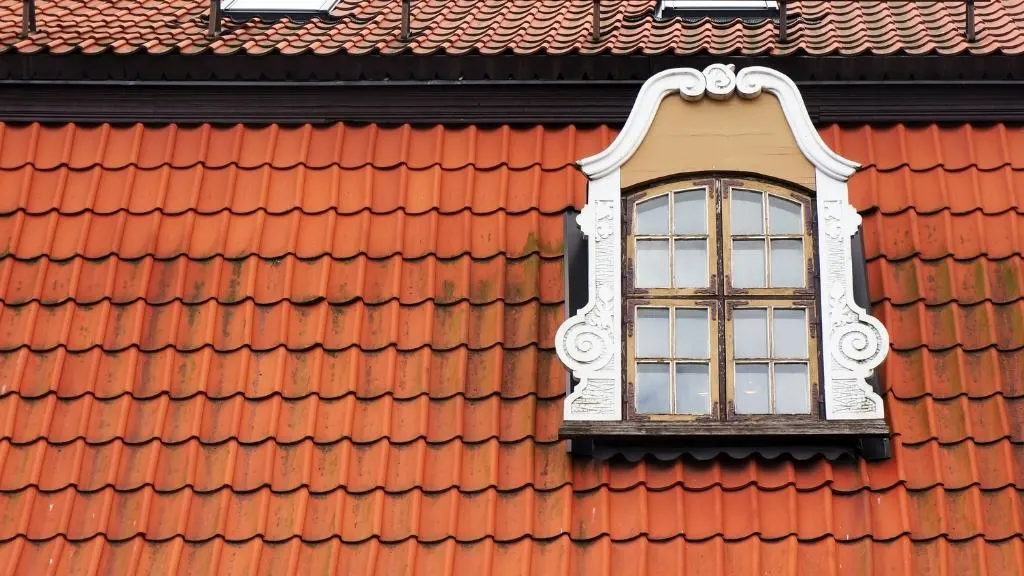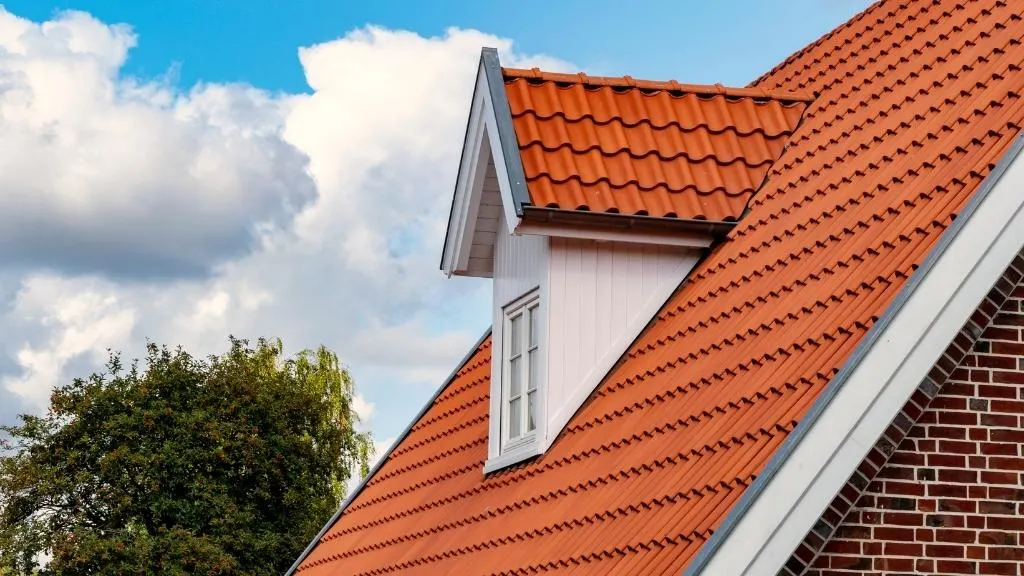
Roofs are one of the most important parts of any building. They protect us from rain, snow, and other harsh weather conditions. There are many different types of roofing materials that can be used to construct a roof, but there are also basic design principles that should be followed in order to achieve an aesthetically pleasing result.
In this blog post we will take a look at some popular Roof Styles And Roof Types and how they function as well as discuss what you need to know before deciding on which type is best for your project!
Common Roof Styles And Roof Types
There are many different types of roofs that can be designed. Some common roof designs include: flat, gable, shed, hip and mansard. Each type has a unique design with advantages and disadvantages that you need to consider when choosing the right one for your project!
- Flat Roofs
Flat roofs are roofs which are not inclined and have a generally horizontal surface. Flat roofs often have a slight slope to allow for drainage, but this slope is usually much less than that found on pitched roofs. They are popular in warmer climates where there is more chance of water pooling, as the extra slope increases the speed at which water can run off a roof.
There are several different types of flat roofing materials available, each with their own advantages and disadvantages:
- Tar and Gravel: This is one of the oldest types of flat roofing material and involves coating the roof with a layer of tar, then scattering gravel over the top. The gravel helps to protect the tar from UV damage and also makes the roof more slip-resistant. However, the gravel can be a pain to keep clean and it can also be quite noisy when it rains.
- Bitumen: Bitumen is a type of tar that has been modified to make it more flexible. It is often used for flat roofing because it is waterproof and relatively cheap. However, it can be quite brittle and prone to cracking in cold weather.
- EPDM: EPDM is a synthetic rubber membrane that is popular because it is tough, durable, and resistant to both UV damage and ozone exposure. It is also relatively inexpensive compared to other materials. However, it can be difficult to repair if damaged.
- Metal: Metal roofs are becoming increasingly popular as flat roofing materials as they are very durable and long-lasting. They are also non-absorbent, meaning that they do not allow water to seep through the roof. However, they can be quite expensive compared to other materials.
There are a number of benefits to having a flat roof:
- Flat roofs are often more affordable than pitched roofs.
- They are easier to construct and usually require less maintenance.
- They are ideal for use in warm climates where there is a risk of water pooling.
- Metal roofs are recyclable, meaning that they can be reused at the end of their lifespan.
However, there are also a few disadvantages to consider:
- Flat roofs often have a shorter lifespan than pitched roofs.
- They are more likely to experience problems with drainage if not properly installed or maintained.
- Flat roofs can be slippery when it rains, which can increase the risk of accidents.
- It can be difficult to find skilled workers for flat roofing projects.
- Shed Roof or Lean style Roofing
This type of roofing is typical in the countryside, and allows rain and snow to run off easily. The roof slopes downward from the peak to the eaves, making it an ideal option for shedding water.
Shed roofs are usually made from wood, metal, or plastic, and can be installed on a variety of building styles, including houses, sheds, barns, and garages. They are also a popular choice for additions and remodels, as they can be added to an existing structure without too much disruption.
When choosing a shed roof, it is important to consider the pitch of the roof, as this will determine how well it sheds water. A roof with a steep pitch will be better at shedding water than a roof with a shallow pitch. It is also important to make sure that the roof is properly ventilated, as this will help prevent moisture damage and keep the interior of the building cool in summer.
Shed roofs are a cost-effective way to protect your home or building from the elements, and can be installed by a professional or DIY enthusiast. For best results, choose a roof with a deep pitch and good ventilation.
The Mansard Roof is a kind of roof which forms two slopes on each side with the lower slope being steeper than the upper. Although there are four sides, it is called a mansard roof because of its resemblance to the attic space (mansarde) in French architecture. This type of roof is common in France and some other European countries such as Belgium, Germany and Poland.
It was originally used for agricultural buildings but now it has become very popular as an architectural feature especially on large buildings such as churches, monasteries and cathedrals where space and height play important roles. It was also popular on houses during the Baroque period and appeared again at the end of the 19th century.

- Hip Roof
A hip roof is a roof that slopes down on all four sides and has no gables. Hip roofs are often used in residential construction because they are more efficient than other roof shapes in terms of weatherproofing and ventilation. A hip roof can also be built with a higher pitch, which makes it better at shredding snow and rain.
The most common type of hip roof is the four-sided hip roof, also known as a valley or cross-gable roof. This type of roof has two sloping sides (the hips) that meet at a ridge in the middle. The two hips from the valleys of the roof.
A three-sided hip roof (also known as a saddle roof) is less common, but it can be used effectively in climates with a great deal of snowfall. It is similar to the four-sided hip roof, except there is one less hip side, so it slopes down on three sides.
A butterfly roof combines two types of hip roofs – the common four-sided hip roof and the three-sided saddle roof. The hips meet at ridges at either end of the building, but there are no ridges in between them where they intersect.
This works well for buildings that have entrances on both ends, since it ensures rain will not be blown into possible doorways by strong winds when the wind blows perpendicular to one slope or another.
Hip roofs are more difficult to build than other types of roofs because they require precise angles and a complicated system of roof support. This is because the ridge at any point in a hip roof must be able to take the weight of all four sloping walls and everything they support, particularly over doors and windows where wind pressure is likely to be greatest.
In fact, it’s not uncommon for the ridges of hip roofs to need reinforcement beams or columns running down their length. Hip roofs are thus common on commercial buildings rather than residences.
In addition, although hip roofs can save space inside a building when compared with other types of roof designs, they often offer relatively little space for architectural details such as windowsills or molding around door frames and other features.
For this reason, hip roofs are sometimes combined with mansard-style dormers, which provide more interior space and add visual interest to the roofline.
- Gambrel Roof
A roof can be underappreciated until you live in a place with terrible weather conditions. The Gambrel roof is one of the oldest and most beautiful designs for roofs that have been used over the years. The basic idea was to create a slanted top on a house or building so rainwater couldn’t build up and back up under the roof.
It’s still being used today because it’s easier to maintain than many other options and provides great style as well as quality protection from the elements. This specific design of roof is mostly found in Mediterranean housing.
The Gambrel roof design has many variations, but the basics are always the same.
- The first step is to determine how steep you want your roof slope to be.
- Then, choose where on the building that angle will be most beneficial.
- Finally, lay down a solid under-layer that can support more weight than just shingles or tiles laid flat or at any random angle.
Once these three steps are finished you are free to decorate the face of the roof with whatever suits your needs and desires best. This includes adding an irrigation system if needed, attaching gutters for drainage, using decorative tiles made of clay or metal, planting vines on it to give it some extra style or adding additional decorations like statues or whatever else your imagination can create.
The only thing that should be done before installing the base for this type of roof is to waterproof the places where it will meet with other types of roofs, walls, gutters and any other place where water might seep through. It’s also important to figure out how much weight the under-layer can hold so you don’t actually need an extra layer on top of it if it can handle more than just shingles or tiles.
Once you have laid down all necessary metals, shingles or tiles and completed any necessary decorating tasks you are fully protected from rainwater damage due to how water moves over your roof. Some people choose to leave off their decorations until after a bad storm in order to show their patriotism or support for a team, but that’s up to you.
- Gable Roof
The gable roof is one of the most common types of roofs, and is typically seen in simple homes. This roof style has two symmetrical faces that are shaped like triangles. These faces join together at a ridge line which runs to the top end of the structure.
This type of roof design can be created with square or rectangular shapes. The triangular faces can have any dimensions that are equal to each other. These types of roofs are not only found on houses but also on several commercial establishments including churches and barns.
Kinds of Gable Roof:
- Clipped Gable Roof – A clipped gable roof is a type of gable roof that has been cut off at the top. This style is often used on homes with shallow roofs.
- Box Gable Roof – A box gable roof is created when two roofs are joined in the upper portion. It looks like a cube-like structure with straight sides that align at 90 degree angles.
- Dutch Gable Roof – This type of gable roof has pitches that are steeper than regular gables. These roofs resemble half-staves which rise sharply up to the ridge and then incline gradually towards the eaves.
- Mansard Roof – The mansard roof is a style of roofing that was built on buildings during the mid 19th century, and it gained popularity among structures built during this period until the early 20th century. This style of roofing is found on buildings such as government structures, schools, and apartment buildings.
- Pyramid Roof – A pyramid roof is a type of gable roof that has four sides that come to a point at the top. This style is often seen on religious structures and public buildings.
The primary advantage of using this type of roofing system is its simplicity in design and construction, thus making it extremely cost effective for building purposes. If you want to build your own home without spending too much money, then a gable roof is your best option.
There are also a few disadvantages to this style of roofing. One such disadvantage is that it offers less protection against the elements when compared to other roofing systems. If you live in an area that is prone to severe weather conditions, then you might want to consider another type of roofing system.
Additionally, gable roofs are not suitable for all types of building structures. If you are planning to build a very large or complex structure, then you might want to rethink your choice of roofing and consult with an expert.
Despite its few disadvantages, the gable roof is still one of the most commonly used roofing systems in the world. It is simple, cost effective, and can be used on a variety of building structures. So, if you are looking for an affordable and easy-to-construct roofing system, then the gable roof is your best option.

